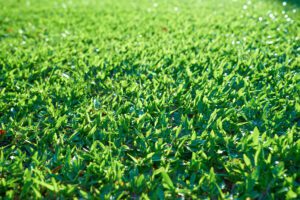Title:
Essential Tips for a Lush Green Lawn
Lawn care is an essential aspect of maintaining a beautiful home. A lush green lawn not only adds curb appeal but also provides a serene environment where you can relax or play with your kids. Here are some tips that will help you achieve a healthy, vibrant lawn:
1. Water regularly – water your lawn deeply once every week during the growing season. Ensure that the soil gets enough moisture without overwatering.
2. Mow correctly – mow your lawn frequently, ensuring that you don’t remove more than one-third of the grass height at any given time. Keep the blades sharp to prevent tearing of the grass leaves.
3. Fertilize appropriately – apply fertilizer four times per year, in spring, summer, fall, and winter. Choose a high-quality fertilizer that suits your lawn type and needs.
4. Aerate and dethatch – aeration helps improve airflow and nutrient absorption while dethatching removes excessive thatch buildup, promoting new growth.
The Importance of Proper Lawn Mowing Techniques
Most people consider mowing as just another chore; however, it plays a critical role in keeping your lawn healthy. When done incorrectly, mowing can cause damage to your lawn, making it vulnerable to diseases and pests. Here are some proper lawn mowing techniques:
1. Use a sharp blade – a dull blade tears the grass instead of cutting it cleanly, leaving ragged edges that invite disease and insects.
2. Cut the right height – cut your lawn to the appropriate height based on its species and variety. Too short or too long can stress the plants, leading to poor growth and increased susceptibility to diseases.
3. Follow the 1/3 rule – never remove more than one-third of the grass height at any given time. This prevents shock and allows the plant to recover quickly.
Choosing the Right Fertilizer for Your Lawn
Fertilizers provide essential nutrients that promote healthy lawn growth. However, choosing the wrong fertilizer can harm your lawn, causing burns, discoloration, and even death. Here are some factors to consider when selecting a fertilizer:
1. Nitrogen levels – choose a fertilizer with the correct nitrogen level based on your lawn’s requirements. Higher nitrogen content encourages leaf growth while lower levels promote root development.

2. Phosphorus and potassium – these two elements support overall plant health by improving root strength, increasing resistance to disease and stress, and enhancing flower and fruit production.
3. Timing – apply fertilizer according to the seasons, considering the specific needs of your lawn during each period.
How to Prevent and Treat Common Lawn Diseases
Despite taking all the necessary precautions, lawn diseases may still occur. Here are some common lawn diseases and how to prevent them:
1. Brown patch – caused by fungus, this disease appears as circular areas of brownish-gray turf. To prevent it, avoid overwatering, use proper fertilization practices, and keep thatch levels low.
2. Leaf spot – characterized by small, round spots on the leaves, this disease is caused by several types of fungi. Prevention involves using resistant varieties, practicing good sanitation, and reducing humidity levels.
3. Snow mold – occurs during cold weather and causes gray or white patches on the surface of the snow. To prevent it, clear away any debris or dead vegetation from your lawn before winter sets in.
In conclusion, having a healthy, attractive lawn requires effort and attention. By following best practices such as regular watering, proper mowing techniques, applying the right fertilizer, and monitoring for signs of disease, you can protect your investment and enjoy a lush green space for years to come.





